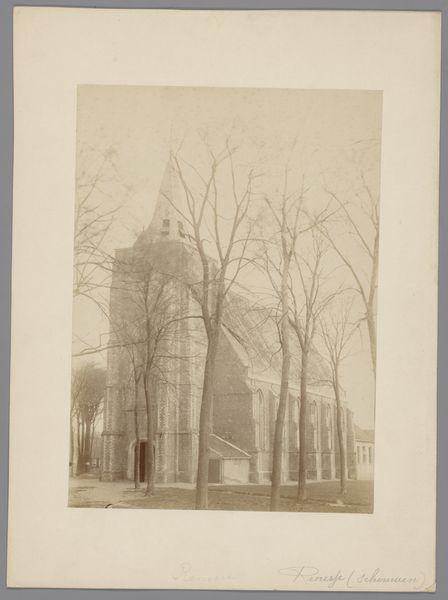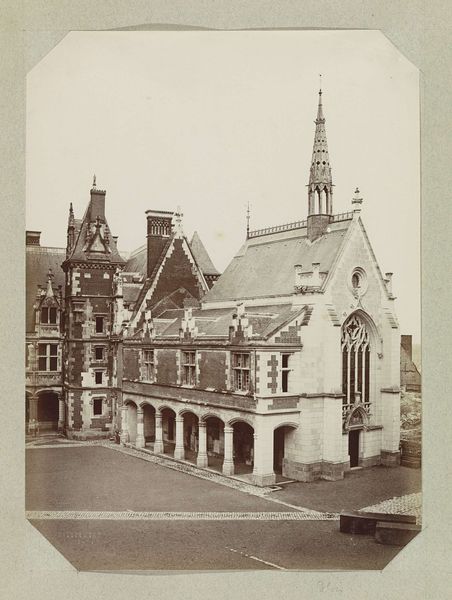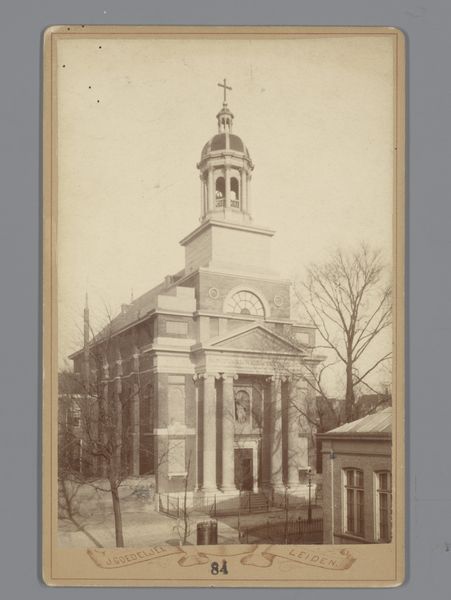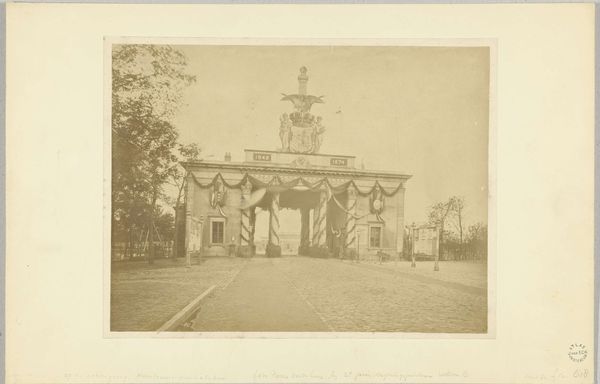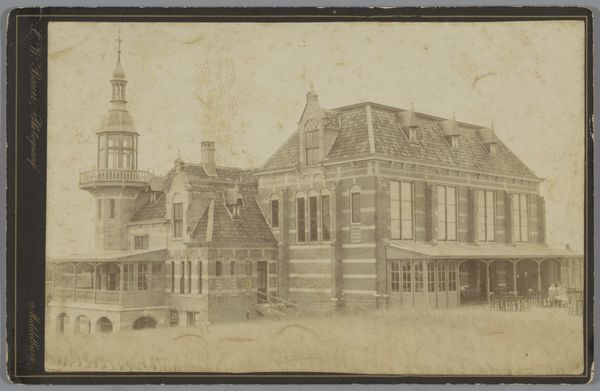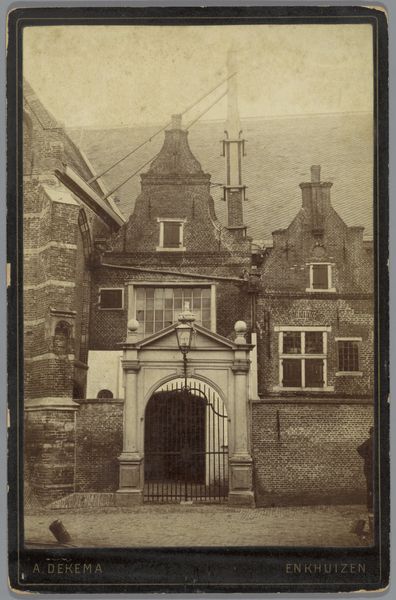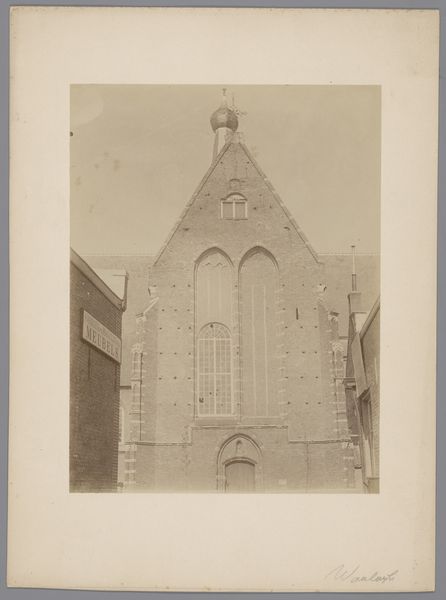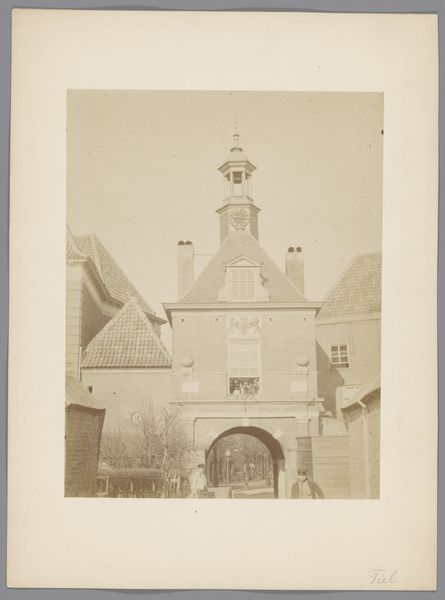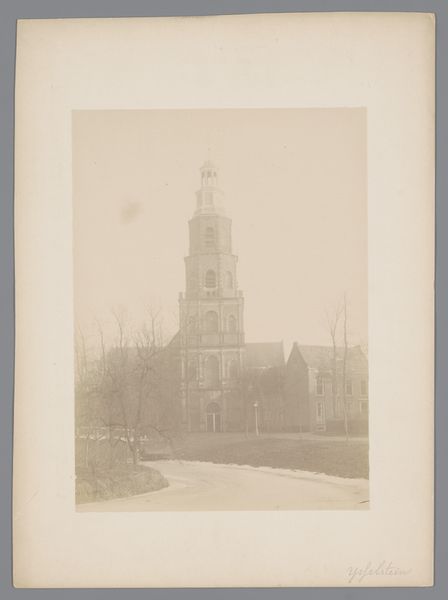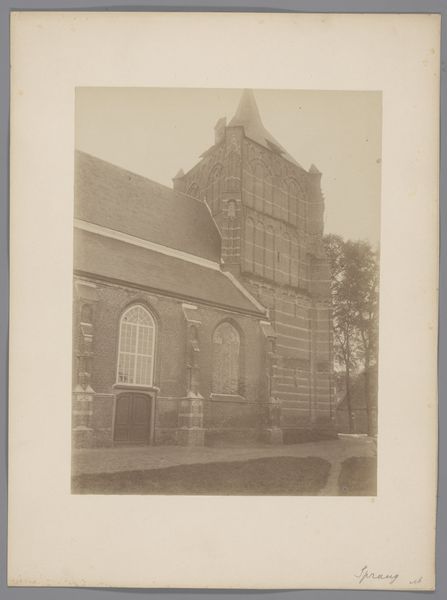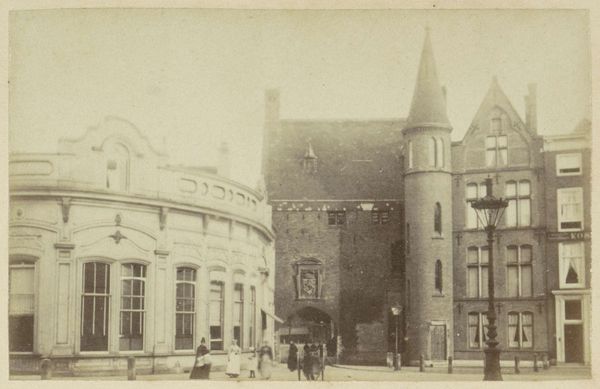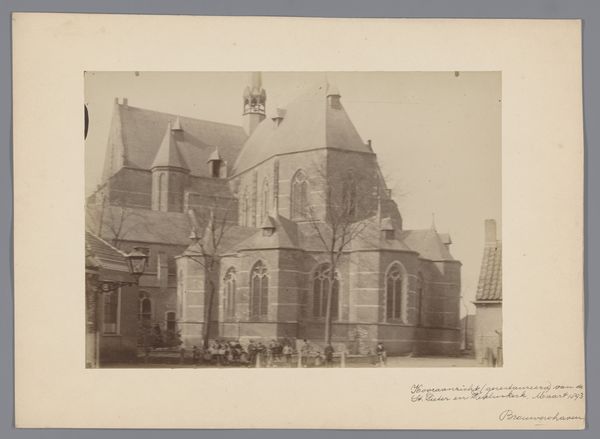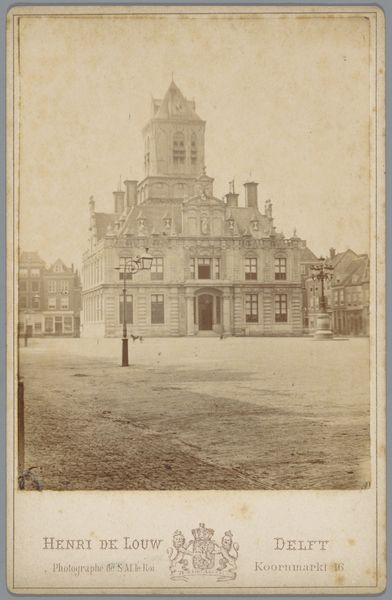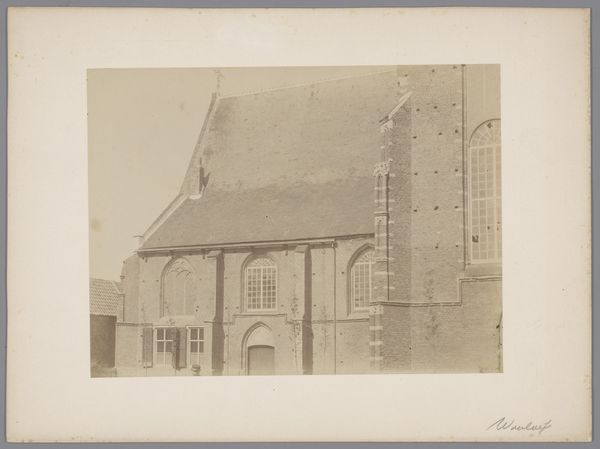
photography
#
16_19th-century
#
landscape
#
photography
#
cityscape
Dimensions: height 85 mm, width 62 mm, height 495 mm, width 323 mm
Copyright: Rijks Museum: Open Domain
Editor: This photograph, "Het Paleis voor Volksvlijt, Amsterdam," was captured by Pieter Oosterhuis between 1864 and 1870. It’s this fascinating sepia tone, almost dreamlike. I am drawn to its majestic cityscape, it is simultaneously grand but also a bit desolate. What do you make of this image? Curator: I see a carefully constructed allegory of progress. The Paleis itself, meant as a temple to industry and national pride, dominates, but consider its name, Volksvlijt, meaning "People's Diligence." How does Oosterhuis’s capture either confirm or challenge that ambition? Editor: Hmmm...challenge it, perhaps? The figures are dwarfed by the building; they don’t seem to “own” it in the way the name implies. Curator: Precisely. Look closer. Flags top the structure like triumphant trophies. Does that communicate welcome and access, or something else? Remember, photography was relatively new. Capturing a building of this scale suggested something about technological prowess but it was so cumbersome. Can we trust what the image is telling us? Editor: That is very interesting. I did not see it this way. Now, seeing it as potentially unreliable makes the photograph much more rich to analyze. The symbolic power it aimed for might not be what was achieved. Curator: Images possess an agency. I'm so pleased that you are picking up on these important semiotic details in your journey. Photography, especially then, had the capacity to solidify ideals, and like you saw, also question those same ideals. Editor: Thanks. This really changes my initial view. Now, I'm seeing the grand facade less as an icon of progress and more as a statement about power and representation in the industrial era. Curator: Indeed. Considering the deeper context encourages us to question not just the image, but the narrative it tries to create. This Paleis represents, after all, very specific ideas about wealth, industry, and Dutch identity at the time.
Comments
No comments
Be the first to comment and join the conversation on the ultimate creative platform.
